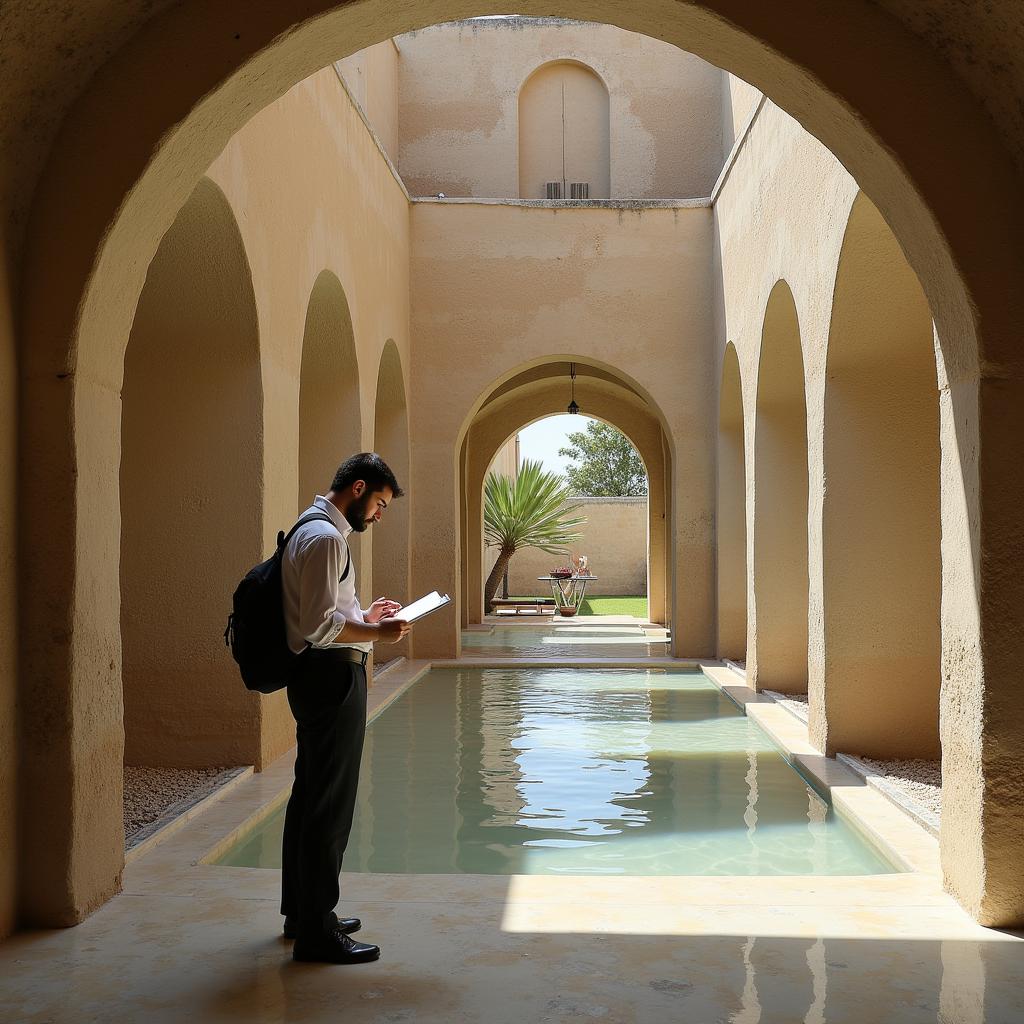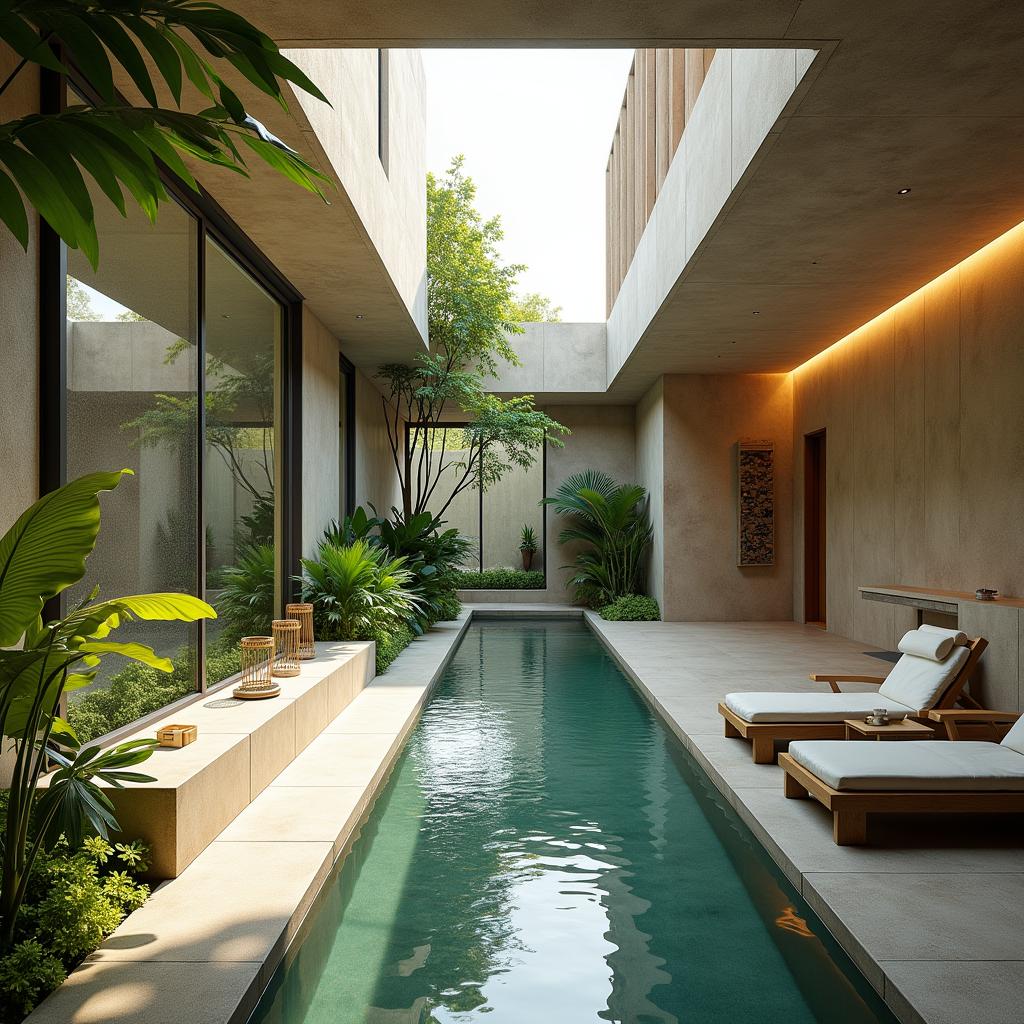The beauty of a spa lies not only in its treatments but also in its ambiance. An inviting and aesthetically pleasing environment can enhance the relaxation and rejuvenation experience, contributing to the overall well-being of guests. An architecture exchange program, a unique opportunity for spa architects and designers to learn from and collaborate with their counterparts in different regions, can play a crucial role in shaping this experience. This program fosters knowledge sharing, promotes innovation, and elevates the spa design industry as a whole.
The Benefits of Architecture Exchange Programs for Spas
Architecture exchange programs offer a multitude of advantages for both participating architects and the spa industry itself.
Enhancing Design Expertise:
- Exposure to Diverse Design Styles: Participants gain exposure to different design philosophies, construction techniques, and cultural influences from around the world. This broadens their creative perspectives and helps them develop a more comprehensive understanding of spa design principles.
- Collaboration and Knowledge Sharing: The exchange program facilitates collaboration between architects from different backgrounds, allowing them to share best practices, challenges, and innovative solutions. This collective knowledge fosters a culture of continuous learning and improvement within the industry.
- Cross-Cultural Perspectives: By working alongside architects from different cultures, participants gain insights into the diverse needs and preferences of spa-goers across various regions. This understanding is crucial for designing spaces that cater to the specific cultural sensibilities of the target audience.
Promoting Innovation:
- Inspiration for New Concepts: The exchange program provides participants with a platform to observe and learn from innovative spa designs implemented in different parts of the world. This exposure can serve as a catalyst for their own creative endeavors, leading to the development of fresh and unique concepts.
- Emerging Technologies and Materials: Participants can explore the latest technological advancements and sustainable materials used in spa design. This access to cutting-edge practices helps them integrate innovative solutions into their own designs, enhancing the functionality and sustainability of spa spaces.
- Developing New Trends: By understanding the evolving trends in spa design around the world, participants contribute to shaping the future direction of the industry. Their insights and experiences inform new design trends, keeping spa design relevant and in line with the preferences of contemporary spa-goers.
Elevating Spa Design Standards:
- Best Practice Sharing: Participants learn about best practices in spa design, including accessibility, sustainability, and the integration of technology. This knowledge sharing contributes to the overall elevation of spa design standards, creating more functional, accessible, and enjoyable spa experiences.
- Cross-Disciplinary Collaboration: The program encourages collaboration between architects, interior designers, landscape architects, and other professionals involved in the design and construction of spas. This interdisciplinary approach ensures a cohesive and well-integrated spa experience, taking into account the needs of all stakeholders.
“The beauty of architecture exchange programs lies in their ability to connect diverse perspectives and foster a shared passion for creating spaces that inspire relaxation and well-being.” – Dr. Sophia Lee, renowned spa architecture expert
Implementing Architecture Exchange Programs in Spa Design
Implementing architecture exchange programs for spas requires careful planning and coordination.
- Establishing Partnerships: Building strong partnerships between universities, professional organizations, and spa design firms is crucial for facilitating exchange programs. These partnerships can provide the resources and support needed to facilitate the exchange of knowledge and skills.
- Defining Program Objectives: Clear program objectives, including learning outcomes, participation criteria, and program duration, are essential for ensuring a structured and successful exchange program.
- Selection of Participants: The program should involve a selection process that ensures the participation of qualified professionals with a diverse range of experience and expertise.
- Cultural Sensitivity: Participants should be prepared to engage in cross-cultural collaboration, embracing diversity and respecting different design philosophies and cultural perspectives.
- Post-Program Evaluation: Regular evaluation of the program is important for identifying areas of improvement, ensuring ongoing relevance, and maximizing the benefits for participants and the spa design industry.
Architecture Exchange Program: A Journey of Inspiration and Growth
Architecture exchange programs for spa design are a powerful catalyst for innovation and growth within the industry. They offer valuable opportunities for architects to expand their horizons, exchange knowledge, and contribute to the development of more beautiful, functional, and inspiring spa spaces. By participating in these programs, architects can not only elevate their own design skills but also contribute to a global conversation about the future of spa design.
“The most rewarding aspect of participating in an architecture exchange program is witnessing firsthand the impact of collaborative design on the spa experience. It’s about creating spaces that not only enhance the physical well-being of guests but also foster a sense of connection and community.” – Mr. Michael Yang, award-winning spa architect
FAQ:
Q: What are the key aspects of spa design that benefit from an architecture exchange program?
A: An architecture exchange program helps architects understand diverse design styles, cultural preferences, and emerging technologies, leading to more innovative and culturally sensitive spa designs.
Q: How can spa design firms benefit from participating in an architecture exchange program?
A: Participation in an architecture exchange program can enhance the firm’s expertise, inspire new design concepts, and improve their understanding of global spa design trends.
Q: What are some challenges that might be encountered in implementing an architecture exchange program?
A: Challenges might include logistical complexities, cultural differences, and language barriers.
Q: What are some examples of successful architecture exchange programs in the spa industry?
A: Some examples include the “International Spa Design Exchange” hosted by the World Spa Association and the “Asian Spa Architecture Forum” organized by the Spa & Wellness Association of Asia.
Q: How can I learn more about architecture exchange programs for spa design?
A: You can research online for information on existing programs, contact professional organizations like the World Spa Association or the American Institute of Architects, or explore opportunities through design schools and universities.



When you’re ready to elevate your spa design with innovative solutions and global perspectives, contact us!
Phone: 0373298888 | Email: [email protected] | Address: 86 Cầu Giấy, Hà Nội. We have a dedicated customer support team available 24/7 to assist you.